1. A Coastline Without People

Namibia is one of the most sparsely populated countries in the world, with only about three people per square kilometer, and even fewer along the Atlantic. For comparison, California’s coastline is lined with bustling cities and towns, but Namibia’s remains almost completely empty. No major ports, no sprawling beach communities, and no resorts dominate the shore. Most stretches are untouched wilderness, where the only sounds are the waves, the wind, and the calls of seabirds. For travelers, this emptiness can feel refreshing and awe-inspiring, like stepping back into a world before human settlement. But the lack of infrastructure, roads, freshwater, and services, also shows why so few people choose to live here. It’s a coastline built for solitude, not society.
2. Skeleton Coast Shipwrecks
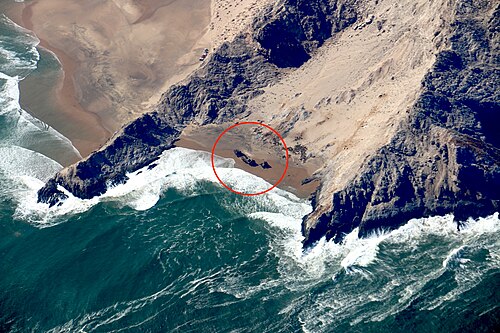
Namibia’s Skeleton Coast has earned its ominous name from the countless ships that have met their end along its treacherous shores. Dense fog, powerful currents, and violent waves make navigation nearly impossible, while shifting sandbars trap vessels before they can escape. Many rusting hulls remain scattered across the coastline, frozen in time and half-buried in sand. Some are small fishing boats, while others are massive cargo ships, their skeletal frames now home to seabirds and seals. The coastline is so inhospitable that sailors who survived a wreck often faced worse odds on land, left stranded in one of the most waterless deserts on Earth.
3. Mars-Like Sand Dunes
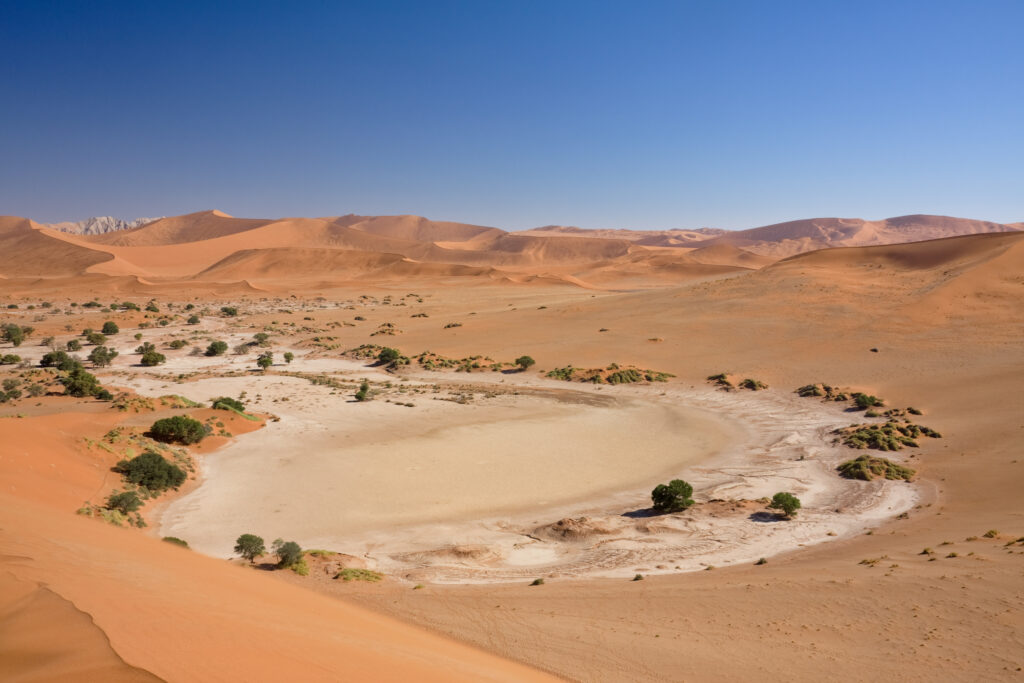
The towering dunes of Sossusvlei are unlike anything most people have ever seen, often compared to a Martian landscape for their striking red-orange hues. Some rise more than 1,000 feet high, making them among the tallest dunes on Earth, and their shapes are constantly shifting with the wind. At sunrise and sunset, the sand glows in brilliant colors, casting long shadows that emphasize the otherworldly scale of the desert. Visitors who climb these massive dunes are rewarded with breathtaking panoramic views, but the climb itself can feel endless under the blazing sun.
4. No Rivers Reach the Sea
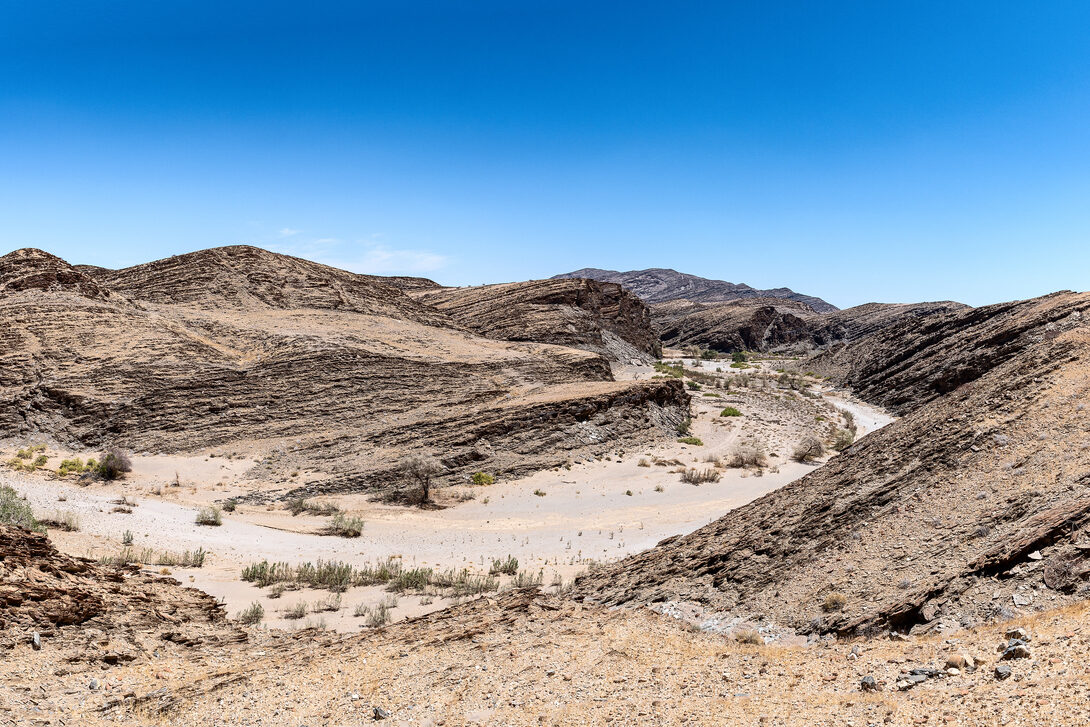
One of the stark realities of Namibia’s coastline is the complete lack of freshwater. While the country does have rivers, most dry up long before they reach the Atlantic Ocean. The Kuiseb and Swakop Rivers, for example, vanish into the desert sands, leaving no flowing water to support coastal settlements or agriculture. Without rivers feeding into the sea, fishing towns never had a chance to flourish here as they did elsewhere in the world. Even the groundwater is scarce and often brackish, making it unsuitable for drinking. For humans, this means a near-impossible environment for daily life, but for desert-adapted wildlife like oryx and jackals, it’s simply part of the natural rhythm.
5. Fog That Never Lifts
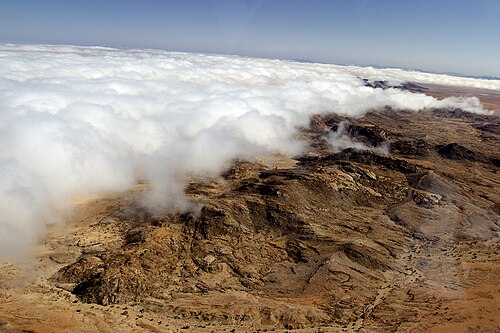
Thanks to the icy Benguela Current that runs offshore, Namibia’s Atlantic coast is shrouded in fog for much of the year. On some days, it can feel like a permanent blanket, rolling inland for miles and making visibility extremely poor. While it creates surreal, ghostly scenery, the fog also makes survival extremely difficult. Sailors feared it because it hid sandbanks and rocky shores, leading to shipwrecks, while inland travelers struggled with sudden damp chills in an otherwise scorching desert. Interestingly, the fog has become a lifeline for certain animals and plants, which have adapted to capture moisture from the mist. Beetles tilt their bodies to collect droplets, while desert plants “drink” from the air. For humans, though, the daily fog only reinforces why the coast feels so forbidding.
6. Wildlife in the Dunes
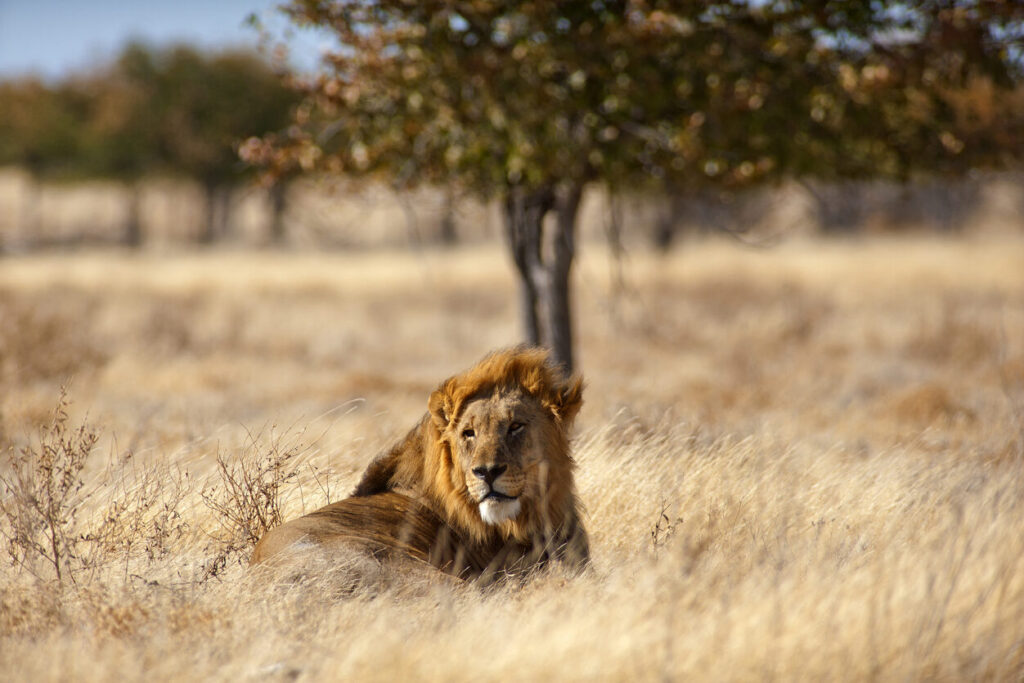
Despite the brutal conditions, Namibia’s coast and desert are alive with extraordinary wildlife that has adapted to survive without reliable water. Desert-adapted elephants roam riverbeds that haven’t seen rain in years, traveling great distances to find food and moisture. Lions, known as “desert lions,” hunt seals along the coast, something lions rarely do anywhere else in the world. Oryx, with their striking horns and pale coats, use the dunes’ limited vegetation and fog to endure. Even smaller animals, like beetles and geckos, have evolved unique ways of drawing water from the environment. This resilience makes Namibia one of the most fascinating places on Earth for wildlife enthusiasts. But for humans, sharing the landscape with predators and surviving on scarce resources makes permanent settlement nearly impossible.
7. Kolmanskop Ghost Town

Kolmanskop was once a glittering diamond-mining village built by German settlers in the early 1900s. The town had lavish homes, a hospital, a school, and even a theater, luxuries almost unheard of in the middle of a desert. But when the diamond boom slowed and richer deposits were found elsewhere, Kolmanskop was abandoned in the 1950s. Since then, the desert has taken over. Sand drifts through windows and piles waist-deep in hallways, reclaiming kitchens, bedrooms, and ballrooms. Today, it stands as one of Namibia’s most famous ghost towns, frozen in a surreal state where human ambition and nature meet. Tourists visit to walk through these haunting ruins, but no one lives here anymore, the desert simply doesn’t allow it.
8. The World’s Oldest Desert

The Namib Desert is estimated to be more than 55 million years old, making it the oldest desert on Earth. Unlike younger deserts that shift with climate, the Namib has remained hyper-arid for millennia, creating a landscape shaped by time itself. Its vast dune fields, some of the tallest in the world, continue to move and reform under the wind, while its “dead valleys” feature trees that died hundreds of years ago but never decayed because of the dryness. This ancient, unchanging nature gives the region a timeless quality, but it also makes it inhospitable. Where humans build and cultivate in other deserts, the Namib resists. Its sheer age means it has perfected harshness, allowing only the toughest plants and animals to survive while people remain visitors at best.
9. Shores That Glow at Night

In rare but magical moments, Namibia’s coastline comes alive with bioluminescent plankton. When the surf crashes, the water glows an electric blue, as if the ocean itself is lit from within. This phenomenon, caused by microscopic organisms reacting to movement, has been seen in other parts of the world, but here it feels especially out of place against the barren dunes and empty shoreline. For visitors, it’s an unforgettable sight, a reminder that even the harshest environments have flashes of beauty. But this natural wonder also highlights how few people live here, most never witness it at all. The coastline remains so untouched that moments like these occur in near silence, without beachfront cities or crowds to notice them. Its beauty is reserved only for the rare traveler.
10. German Colonial Towns
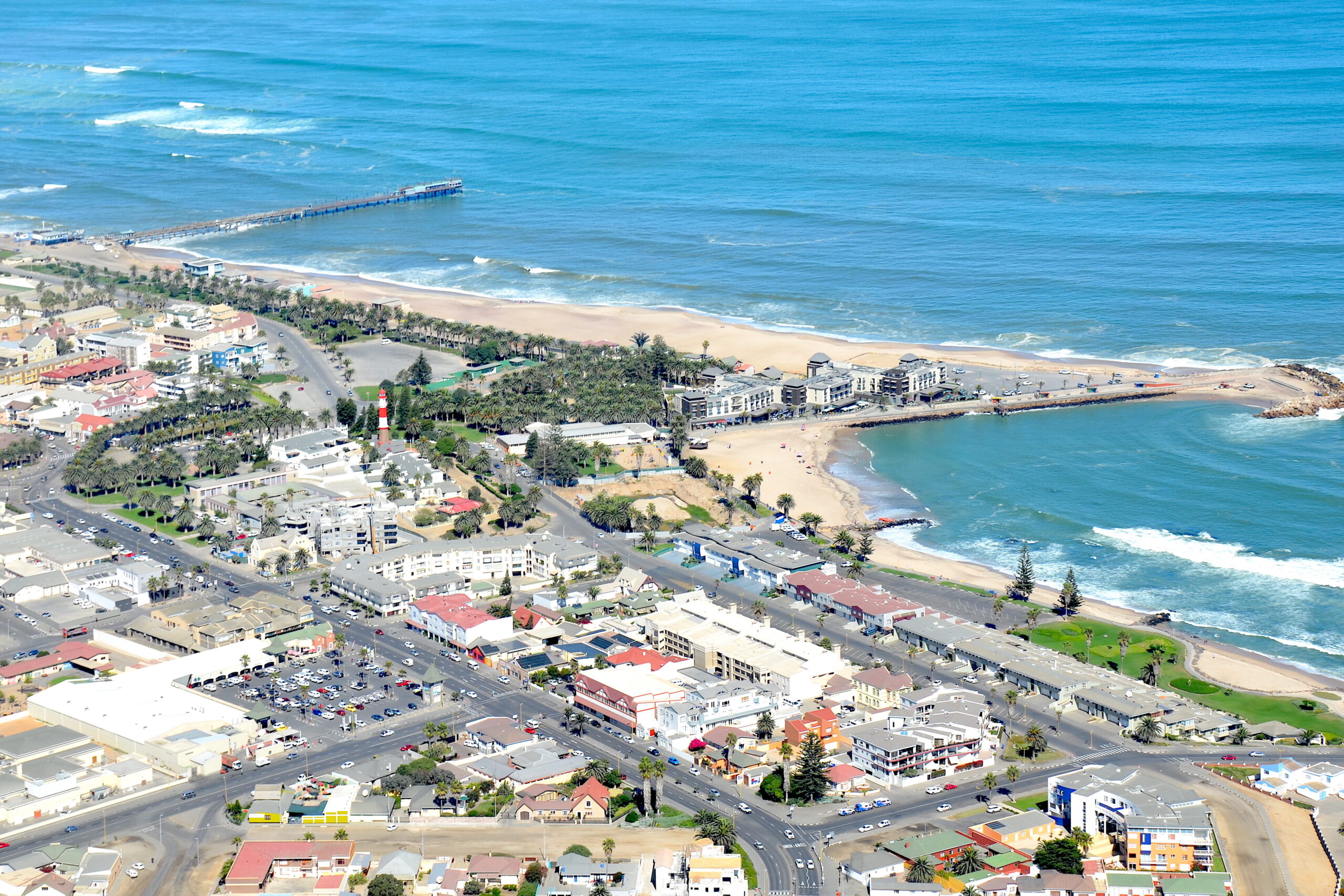
While much of Namibia’s coastline is empty, some pockets still reflect the country’s colonial past. Towns like Swakopmund and Lüderitz were established by Germans in the late 19th century, when Namibia was known as German South West Africa. Their influence is still visible today: half-timbered houses, Bavarian-style facades, German street names, and beer halls that serve bratwurst and lager. Walking through these towns can feel like stepping into a small European village, despite being thousands of miles away from Europe and surrounded by desert. While these towns are among the few inhabited spots on the coast, they remain relatively small and isolated. They show that people have carved out life here before, but even with architecture and culture transplanted from Europe, the coastline’s natural harshness keeps these settlements limited.
11. Protected and Permit-Only Zones

The Skeleton Coast isn’t just a name, it’s a protected national park with strict access rules to preserve its untouched beauty. The park spans more than 16,000 km² and is divided into two parts: the southern, which is accessible by 4×4 vehicles, and the northern, a strictly controlled wilderness only reachable by guided fly-in safari . To explore the southern area, via entry at Ugab River or Springbokwasser gates, you must have transit or overnight permits, which you can obtain at park gates or at Swakopmund’s permit office . These permits enforce entry and exit by certain times and often require confirmed lodging reservations . It’s a rugged, regulated journey, the kind that keeps most of the coast completely wild.
12. Sparse Supply Routes

The coast’s remoteness makes life, and even visits, logistically tricky. While the C34 road offers gravel-route access through parts of the park, fuel and water are scarce. The only refueling points are at Palmwag, Mile 108, and Terrace Bay (the latter for camp guests only) . Beyond basic tracks, there are no true roads, entering deeper means relying on 4×4 vehicles, sturdy supplies, and often an organized tour . As shared by a traveler online “Skeleton Coast park is fairly regulated … you need a permit to enter, and you’re not allowed to go off the main road except where there are designated turn-offs.” This desert demands preparation, absence of infrastructure isn’t just remote; it’s defiant.
13. Solitude at the Edge of the World
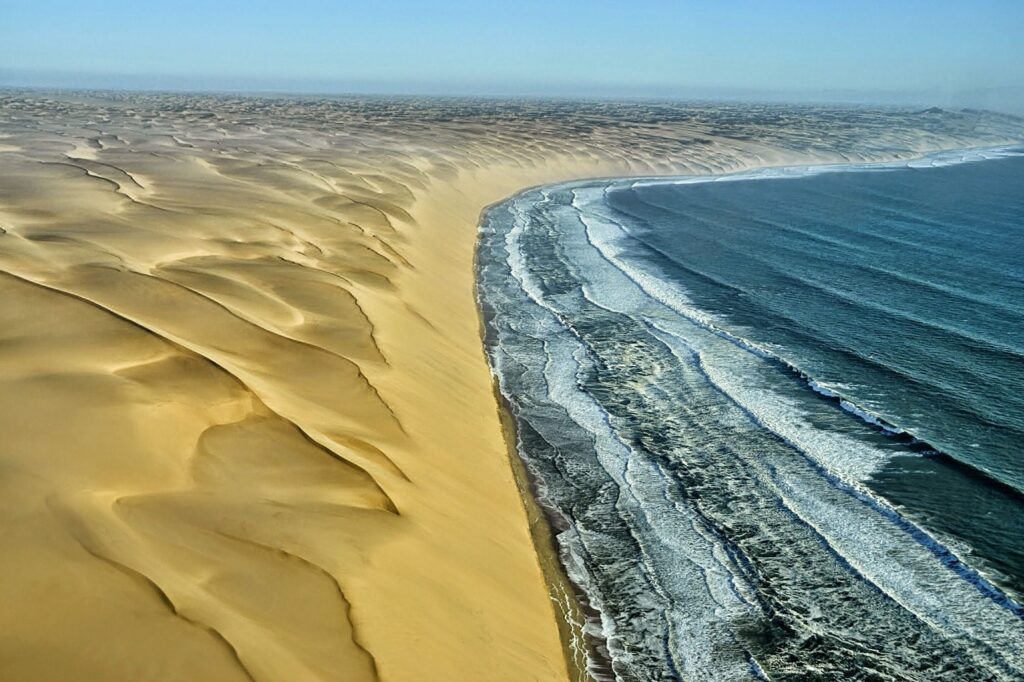
There’s no town here. No crowd. Just the ocean, sand, and silence. Standing on Namibia’s coast feels like reaching the very edge of existence. Waves merge with dunes and fog lingers like a ghost. It’s not dramatic, it’s humbling. The coast’s long stretch of emptiness allows space for reflection and wonder, where the Earth seems vast and people inconsequential. This profound stillness, where the sea meets desert without pause, captures the essence of why almost no one lives here: nature reigns entirely.
This story The Country With a Coastline Longer Than California’s, And 13 Reasons Almost No One Lives There was first published on Daily FETCH


